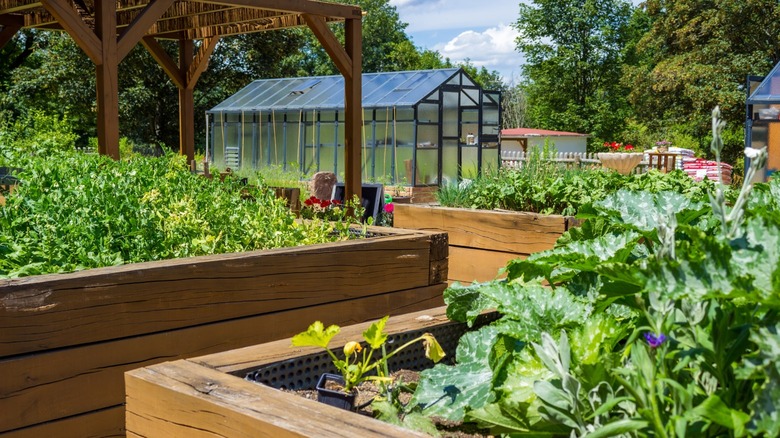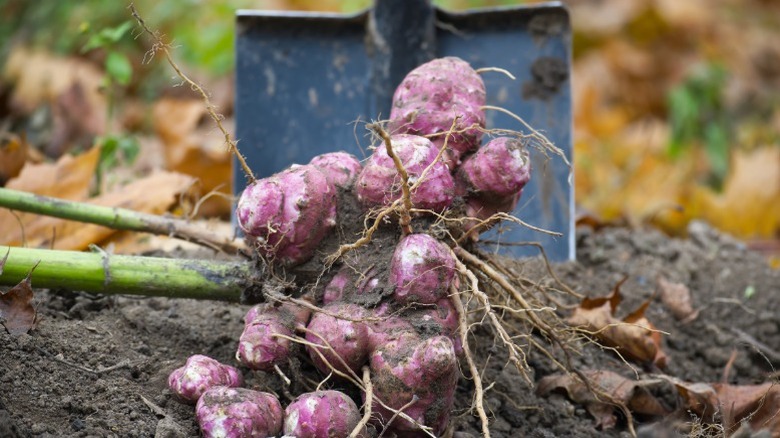The Native Root Vegetable That You'll Want To Grow In A Raised Bed
If you are tired of growing the usual crop of carrots and potatoes, perhaps it's time to try something new. But while this tasty root vegetable is native to the U.S., you might want to be careful where you plant it. The sunchoke (Helianthus tuberosus) is a prolific plant, capable of spreading out via rhizomes. Even the smallest bit of sunchoke root left in the soil can lead to new growth. Ultimately, for the best results with this root veggie, try sowing it in a contained manner, such as a raised bed to avoid unwanted spread.
Sunchokes, also known as Jerusalem artichokes, are not actually artichokes and are completely unrelated to Jerusalem. Instead, this species is a member of the sunflower family that is native to the plains and prairies of the western U.S. As an added benefit of growing sunchokes, your garden will also be graced with beautiful flowers with a bright yellow look similar to sunflowers in late summer to early fall. A perennial crop, you can plant these veggies once and have them come back to your garden on their own every year. Sunchoke tubers have a look likened to very bumpy potatoes and have a sweet and nutty taste. This nutritious root vegetable was first cultivated by Native Americans, but now serves as an important food crop worldwide.
Use raised beds for stress-free sunchoke harvests
Instead of choosing to forgo sunchokes in your spring garden, you can easily grow them in containers or a raised bed. As long as they have full sun, sunchokes will proliferate in almost any type of soil. This point is good for gardeners who don't have to worry about amending their soil too much, but bad if they are allowed to grow unchecked. Similar to why you should never plant mint in the ground, sunchokes will rapidly form into widespread colonies, often overgrowing the bounds of your garden plot. Growing them in raised beds lessens the risk of their rhizomes spreading and taking over your other plants.
Although easy to grow, you can make the most of your sunchokes by paying attention to their specific growing needs. The best type of raised bed will be large enough to handle a spread of 3 to 5 feet. Plant either seeds or tubers, but make sure that the soil maintains consistent moisture. Sunchokes dislike heavy, waterlogged soil and your overall harvest can be impacted with fewer tubers. Focus on adding a light and rich soil blend to your raised beds, which will allow the tubers to grow freely and make it easier to collect them at the end of the season. Raised beds also make it easier to create different types of DIY trellises for your vegetable garden, which sunchokes often need because they can grow so tall like their sunflower cousins.

